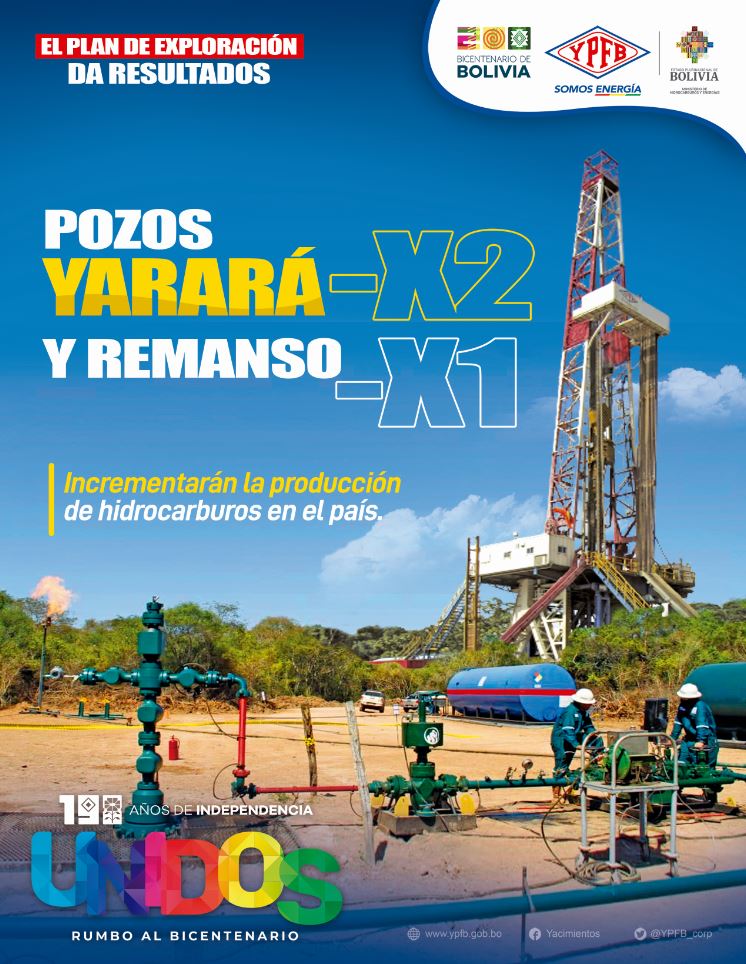Vesna Marinkovic U. (*)
While recognizing the importance of digitalization in industrial processes within the sector, the interviewee emphasizes the importance of human beings, teams, and knowledge in extracting value from digital platforms implemented within organizations.
1The current challenge facing the hydrocarbon industry is to become more efficient and, above all, less polluting. In this regard, can the integration of new technologies into the sector optimize its operations, improve energy efficiency, and promote sustainability in its field operations?
Let’s start by emphasizing that this challenge is not new to the industry, as efficiency and environmental awareness are fundamental aspects of the culture in the hydrocarbon industry. What is interesting today is that we have an even larger arsenal of technological tools to make this culture of efficiency and sustainability effective. The existence of what we now call digitalization is the culmination of many technological trends that have evolved (based on results) in different industries, such as the web, manufacturing, and entertainment, and that can now be applied to more specific applications within our sector. The industry’s challenge is to capture the opportunity of digitalization and be prepared with the necessary organizational adjustments to advance in this constant pursuit of efficiency and sustainable operations.
2What is the impact of artificial intelligence and data analytics on the subsurface study and planning process in the hydrocarbon sector?
The deployment of artificial intelligence (AI) and data analytics are some of the potential benefits of digitalization. Even though AI and data analytics are methodologies independent of their commercial implementation, it’s important to understand that digitalization provides a data and computing ecosystem for these techniques to be useful for an organization. AI models can be very interesting, but they bring value only if we can deploy them at scale, use them appropriately, and with the latest available data. In the case of subsurface studies, the impact of these technologies can be divided into two main categories. The first is the specific acceleration of many data processing tasks required to transform our measurements into information interpretable by our experts. An example of this is seismic horizon or fault interpretation assisted by neural networks or the substitution of aspects of reservoir simulations with AI models. The second category could be considered as the acceleration of the ‘global’ understanding of the subsurface through the synthesis of a large amount and variety of information. An example of this category would be the use of artificial intelligence to understand spatial patterns in data and assist in decision-making in parts of the subsurface that have not yet been characterized, such as the identification of prospects or new optimal drilling locations. That said, both categories depend on appropriate computational and data infrastructure, which is the focus of digitalization initiatives.

3How do you view the applicability of these technologies in the field of new energies, such as carbon storage, geothermal production, and lithium extraction from aquifers? What advantages can be gained from using digital transformation in these areas?
The adjacency of subsurface workflows between E&P activities and the new energy sector leads to an immediate applicability of all technological development efforts to activities such as carbon storage and geothermal production, for example. This is especially true regarding subsurface characterization and the simulation of fluid injection and production operations. The same applies to potential or relatively emerging use cases, such as hydrogen storage in geological formations or the production and injection of brines for lithium production using direct lithium extraction (DLE) technologies. In the case of carbon storage, advances in digitalization may be a determining factor in its feasibility. Since CCS is an activity that does not generate direct economic benefit, the efficiency and automation of the management and monitoring of operations are opportunities where digitization can make a difference. In general, the lessons learned from digitalization processes in E&P will be of great value to these new industries, and therefore, beyond emissions reduction, the strategic importance of the participation of oil sector companies as a knowledge transfer mechanism is significant.

“The effects of digital transformation on the oil industry with regard to sustainability and energy transition objectives can be studied based on direct or indirect impacts.”
4In relation to digital transformation, how is the workforce in the oil sector preparing to acquire the necessary technological skills? What is the importance of developing digital training for employees for the future of the sector?
What we observe globally is that companies that have effectively adapted to the new needs of the workforce are those that have been able to capitalize on the online training ecosystem that is part of today’s educational reality. In addition to formal training and postgraduate study opportunities, fostering, supporting, and recognizing continuous learning by each employee, such as in data analytics tools, web technologies, and basic programming, is important. As important as training existing staff is also the ability to attract and hire personnel with pre-existing skills from other industries. In this case, being involved in digitalization processes is an attractive factor for new generations seeking exposure to the latest digital advances. Having a workforce adapted to digitalization is ultimately what enables an organization to extract value from the set of technological platforms implemented during such initiatives. In other words, the technological aspect is only half of the story; in the end, it is the teams, with the right knowledge and mindset, who will extract value from the digital platforms implemented within organizations. An example would be the willingness and ability of an expert to connect to a data source exposed through a digital platform and run a data analysis customized to their specific problem. In this case, the absence of such an expert would have left the digital platform as a dormant technological investment, without realizing its value.
5How does the oil industry ensure that digital transformation contributes to its sustainability and energy transition objectives?
The effects of digital transformation in the oil industry with respect to sustainability and energy transition objectives can be studied based on direct or indirect impacts. I mentioned earlier some indirect impacts, related to the ability of oil sector technologies to eventually contribute to new energy areas. Some examples today of the digitization as a mechanism for advancing sustainability are in the areas of field operations monitoring and optimization, as well as modeling and simulation of operational scenarios that include variables related to carbon emissions. As an industry, we see that quantifying emissions will depend on companies’ ability to effectively monitor their operations. Through the use of sensors, data analysis, and Internet of Things (IoT) systems, oil companies monitor and optimize many of their operations in real time. This not only improves efficiency and reduces costs but also helps reduce emissions by providing the necessary information to understand emission sources and possible control actions.

6In the context of digital transformation, what cultural and organizational changes are being implemented in companies in the sector to promote innovation and the adoption of advanced technologies?
There are common recipes across industries that touch on corporate agility, a culture of innovation, and making decision-making more data-driven, among others. These topics also apply to the oil sector, but specifically for E&P components, it’s important to emphasize a culture of collaboration as a strategic axis of corporate digital transformation exercises. The complexity of operations, from subsurface to drilling to production, leads to a trend of implementing digital transformations in silos that cannot solve many of the major inefficiencies that persist in communication between these teams. Weeks or months of lost time due to inconsistent information and processes among different involved departments. Therefore, in addition to the typical needs of digital transformations, fostering a culture of single data sources and a willingness to synchronize information is a cultural component aligned with the value of digital platforms and therefore increases organizations’ receptivity to these new technologies.

